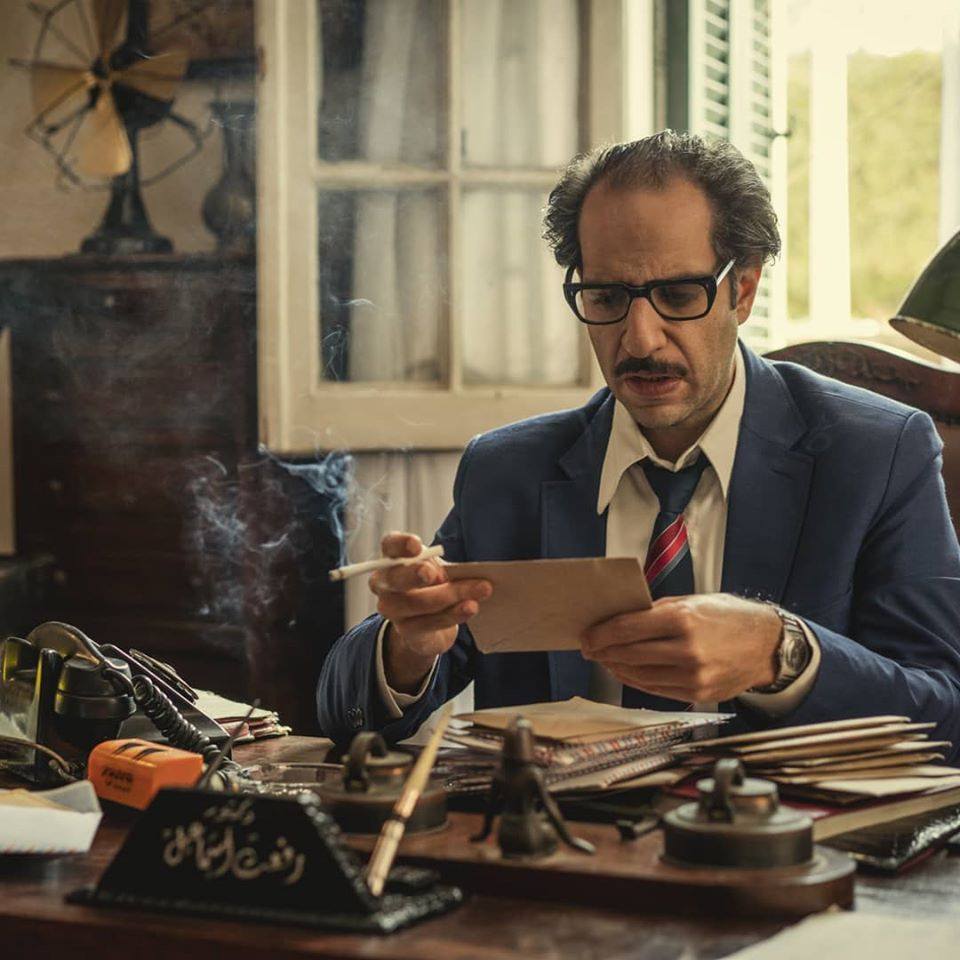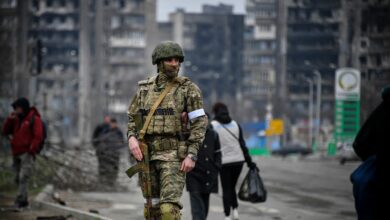The title of “Ghosts With No Maps” – Albawtaka’s second collection of translated short stories, published in 2011 – might evoke fear, but its cover design as well the actual stories conjure up sorrow.
On the cover page, a single ghost tries to find peace in one of his many coffins with no success. These feelings of agony and misery associated with death are what seem to tie the eight short stories together, edited and translated by Hala Salah Eldin.
Paul Yoon’s 2009 “And We Will Be Here” highlights the trauma of war and colonialism during the Korean War. Japanese nurse Miya takes care of the wounded and comforts dying soldiers in a makeshift hospital that used to host artists. Taking care of one wounded man, Jong Bay, alienates Miya from other living beings. She struggles to bring him back to life, refusing to accept the devastating reality of war. Readers become familiar with the atrocities of war through a detailed description of Jong Bay’s case; war has turned him into a stinking-like corpse.
Miya refuses to believe that she will never have Jong Bay back. She rebuffs all the attempts by the American doctor to face her with reality. Drifting into her own world, she forgets all about the hospital, and can no longer communicate with anyone except an imaginary child. The lack of communication that spreads throughout Miya’s conversation with the doctor and the American soldier is part and parcel of post-war trauma, as discussed by American scholar Cathy Caruth, as a “response to unexpected or overwhelming violent … events that are not fully grasped as they occur … it’s a break in the mind's experience of time.”
“My Mother’s Garden” (2000) by Katherine Shonk portrays the disastrous effects of the Chernobyl explosion on the relationship among members of a single family. The protagonist is the Ukrainian wife Yulia, who lives in a safe place with her daughter Halinka and husband Michola, while her mother lives in a contaminated village near the explosion site. Unlike Miya, who fights to revive a dying person, Yulia struggles with three living traumatized people. Michola seems healthy, but is psychologically disturbed. Halinka is a grief-stricken child that does not understand the harsh reality of the nuclear explosion, and the grandmother refuses to believe that her home is contaminated.
The title of the story refers to the grandmother’s contaminated garden. A common symbol of happiness and fertility, the garden becomes in the story a source of death, and the effect of the Chernobyl disaster is summed up in the onion plant. It looks healthy and delicious, yet is deadening, just like the loving grandmother who contaminates anyone who comes near her.
“The Worst You Ever Feel” (2007) by American author Rebecca Makkai also depicts agonized people. Set in the US, the story goes back to Romania in 1941 and portrays the anguish, imprisonment and killing of Jews. Readers are introduced to the events from the viewpoint of a character named Aaron. Listening to a piano recital by Radelescu, 10-year-old Aaron imagines Radelescu’s imprisonment and the ten days of starvation and pain he spent with his companions in a music school. The character that begins and ends the story is Radelescu; the suppression that he was exposed to is symbolized by the chopping off of his finger. The suffering of Radelescu and the death of two other characters are revealed in concert with Aaron’s discovery of a horrific family secret. The stark revelation is accompanied by him shamefully urinating in his pants. The ideas that contaminated his mind are just like the filthy urine, that if kept inside could have ruined him.
An opposite representation of the father figure is found in “Touch” (2007) by Alexi Zentner. “Touch” gives an account of traditional life in the Canadian countryside. The child narrator tells about a period of his life and an accident that his loved ones were involved in. The father figure, though with a battered arm, is the source of power in the story. Like the aforementioned story, the male child is the protagonist; however, the suffering of his mother in this story is obvious. The characters seem helpless facing the cruel force of nature.
But not all suffering results from war. In “Seventh Street Alchemy” (2003), the Zimbabwean Brian Chikwava highlights the victims of an oppressive materialistic state apparatus in Harare, United States. Members of the local community go unnoticed by everyone, and for the authorities, they do not exist because they have no official documents to prove their existence. The whole community presented in the story is corrupt, starting from individuals to the state’s police force and registry office. The protagonist, or rather anti-heroine, is an aging quasi-prostitute called Fiso – an appropriate choice, as prostitutes’ bodies are mere commodities over which they have no control. In “Seventh Street Alchemy,” prostitutes are oppressed laborers whose work strengthens the circle of the capitalistic oppressive system. The life or death of prostitutes and other destitute people goes unnoticed by the system.
People’s lives are also insignificant in Jesse Ball’s “The Early Death of Lubeck, Brennan, Harp, and Carr” (2007). Written in the Kafkaesque style, the story reflects the absurdity and futility of life. It begins in a gloomy room where the reader is not privy to what is happening outside. The gloomy setting foretells the future events of the story, where a girl in a brown dress’s lie brings down Lubeck, Brennan, Harp and Carr.
In “The Casual Car Pool” (2005), American author Katherine Bell uses the stream of consciousness style, which Virginia Woolf was famous for, to depict a full view of the lives of her characters. Four unrelated people meet by mere chance; they are connected by the car pool and the odd discovery of a trapped, dangling man. Through the use of the stream of consciousness technique, as well as flashbacks and dialogue, the four characters’ commonalities are exposed.
There are no clear relations between the eight short stories, except for the collective feeling of misery of the characters. A common feature among the stories, though, is that they all won prestigious literary prizes like the O. Henry Award for short stories and the Pushcart Prize for best of the small press publications. The authors’ biographies shed light on the writers and some of the events in the short stories that Arabic readers might be unfamiliar with.




